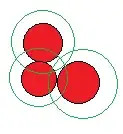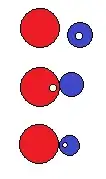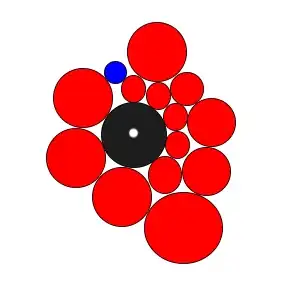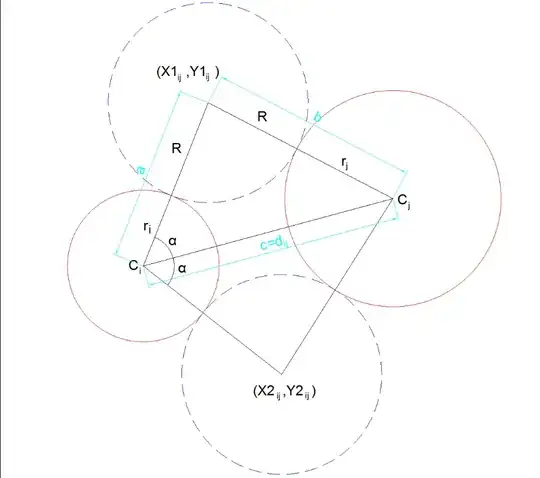The closest placement to the point will either be on the point, or touching a circle.
therefore, first check the point, then roll the new circle around the edge of each existing circle, calculating the distance from the point and if you overlap as you go and keeping track of the minimum distance point. Stop when you have traversed every circle.
ie. check all points on the green lines, plus the white circle. where the green line is a circle with radius of the red plus the blue

you need to check the whole of the green line, not just intersections so that you cover these edge cases.

Obviously the step size of your traversal is going to be important in terms of performance. But as you state performance is not an issue, choose the value corresponding to the resolution of your output value. ie float, long?
clarification:
my suggestion is to brute force all points around each circle testing for overlap with all other circles at each point. no cleverness.
If the example pic is indicative of the number of circles and resolution, it shouldnt be a problem for a standard pc
we have 20 circles of average radius 200 so thats approx 20 * 2 π * 200 points * 20 intersection tests = 4800000 iterations
Note:
Iterative approaches like this are flawed in that your step size, in this case the resolution of your output, can greatly affect the result.
Say i have two red circles 2 pixels apart and a 1 pixel radius blue circle to squeeze between them. Clearly with either of the two pixels as the center of the blue circle it will overlap one of the reds. but obviously there is room for the circle if the center lies between the two pixels.
Hence my comment asking about the resolution of the output. which you said could be anything.
you can also solve the simultaneous equation for each pair of circles with radius increase by the radius of the blue circle.
this will give you the points where the blue circle will touch both red circles more accurately than iterating.
However. there are several conditions where if you only do this you get the wrong or no answer. ie.
1 or no circles
2 or more circles but with target point far away and outside of them.
many circles but with target point close to the surface



